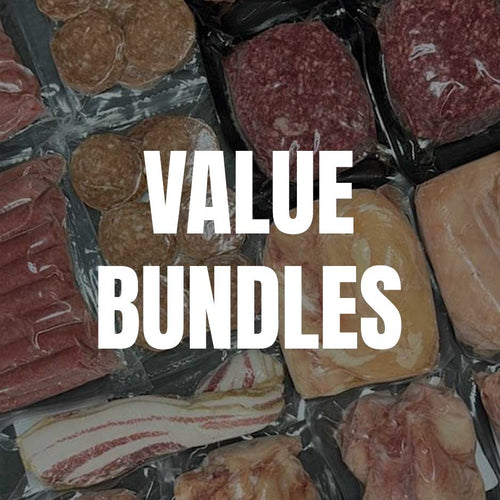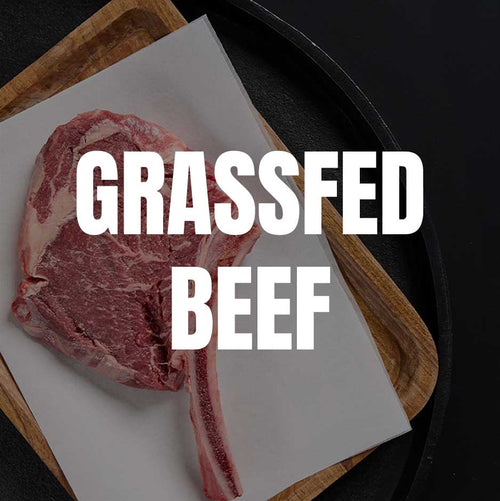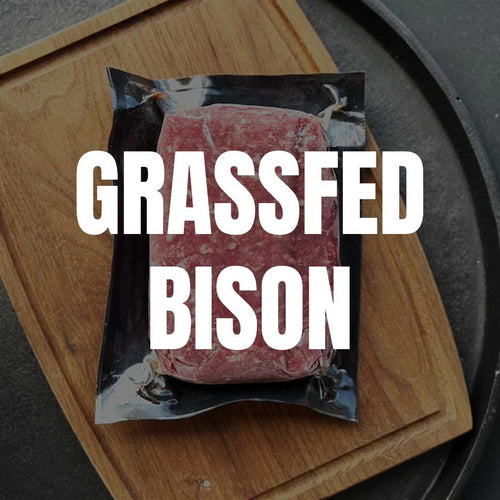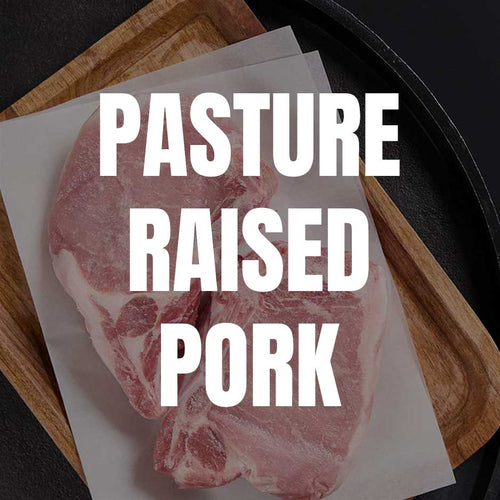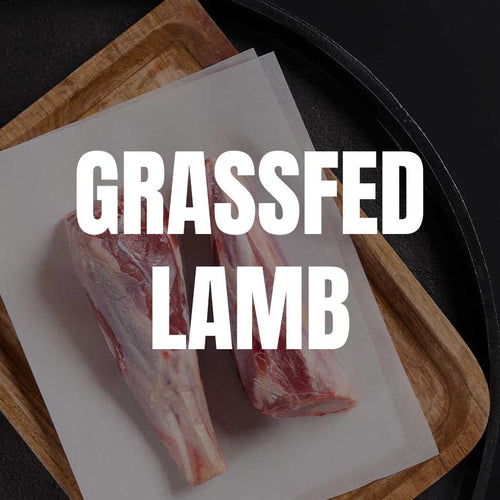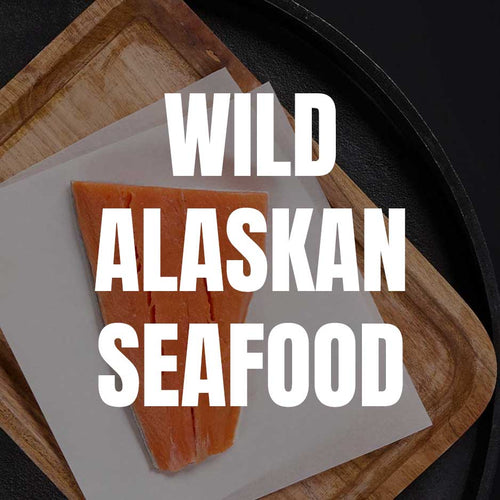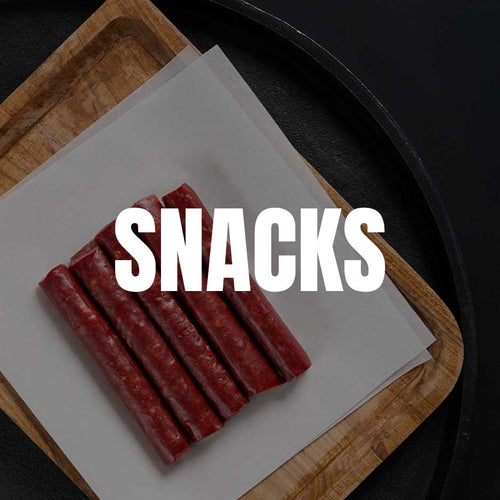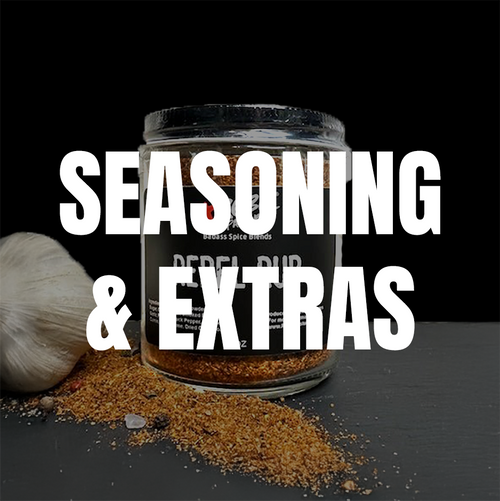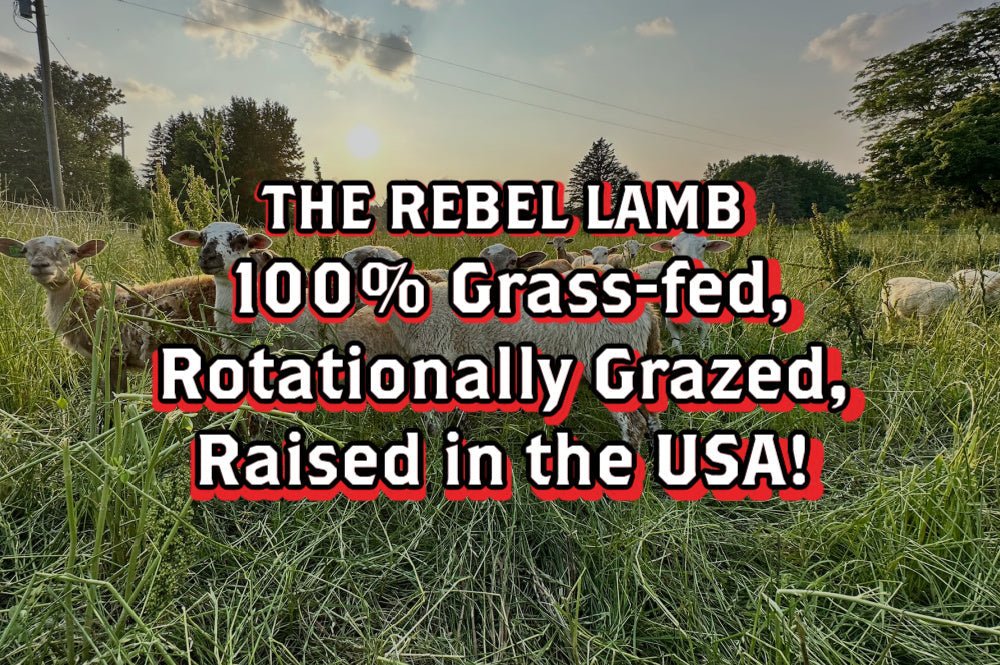
· By Jenni Bajema
The Rebel Lamb 🐑 100% Grass-fed, Rotationally Grazed, Raised in the USA
If you had told us a few years ago that we’d be raising sheep, we probably would’ve laughed—and then politely said no thank you.
Sheep have a bit of a reputation. They’re fragile, prone to parasites, and experts at hiding when something’s wrong. It felt like a risky move, especially for animals so calm and quiet. But something kept pulling us back. So we did what any curious, slightly stubborn farmers would do—we dug in. We read, we toured farms, we asked a million questions. And eventually, we realized something important:
You can plan all you want, but you’ll never feel 100% ready.
So we took the leap.
Why Grass Fed and Finished Lamb?
Lamb might not be an obvious choice when it's only 1% of the meat consumed by Americans. But there is so much more to lamb than just the meat. They play a vital role in the regeneration of our soil:
- They are a highly efficient animal that can take unpalatable, low energy plants and convert it to high quality meat.
- They are gentle on pastures and eat both grass and broadleaf plants.
- Sheep require less land than cattle and can be stocked more densely.
- Grassfed lamb is higher in Omega 3's, CLA, Vitamin E, and other antioxidants (eatwild.com) than its conventionally raised counterparts.
- There is a need for USA grassfed lamb. 74% of lamb sold in our country is imported. And most of that is grain finished.
- Last but not least: LAMB TASTES EXCELLENT.
The Breed - Katahdin:
There are hundreds of different types of sheep breeds. Different breeds have different characteristics just like different breeds of dogs. These were the criteria most important for our breed choice:
1. Hair Sheep: Katahdin sheep grow a wool coat, but shed it in the summer months. This means we do not need to shear them and their meat is milder tasting due to decreased lanolin on their skin.
2. Parasite Resistance: The Katahdin breed was developed in warm regions where parasites grow rampant. This caused the breed to adapt and develop resistance to parasites to survive. This is very important to us because we do not want to treat our animals with antiparasitic chemicals.
3. Excellent Foragers: Some sheep breeds have been bred for production in a feed lot -They need grain in order to finish properly. The Katahdin breed is often used in grassfed operations, so their microbiome and growth has been dependent on grass, not grain.
4. Availability: This is an important aspect many people overlook. Are there better breeds out there for grassfed & finished lamb? Probably. But if we don't have easy and affordable access to feeder lambs - our farm can't grow and compete in the marketplace.
Rotationally Grazed:
When we first receive our lambs, they need to be trained to electric fence. This process typically takes 2-3 weeks. Once trained we can start moving them through the pastures. Here are some of the ways we use sheep to regenerate our fields through rotational grazing:
👉 Our lambs are typically moved every 1-2 days to fresh pasture, and do not stay in the same place for any longer than 3 days. This means our team is setting up paddocks, moving water tubs, and pulling mineral feeders almost daily to accommodate the moves.
👉 Sheep and cattle do not share the same type of parasites, so we can interchange these two animals to allow our fields a greater rest time to allow for better parasite control.
👉 Sheep will do a better job a cleaning up broadleaf plants than cattle. We can use them to help keep certain plants under control (think Autumn Olive).
Parasite Control:
I'm sure you've noticed that I've mentioned parasites a couple times already... Sheep are NOTORIOUS for parasite issues. There are several different types of internal and external parasites that affect sheep, all of which will cause significant health issues possibly leading to death.
To combat the life cycle of a parasite, we need to move their host (the sheep) every 1-3 days to fresh pastures. This stops the sheep from reinfecting and spreading the parasite eggs between each other. This is natural parasite control. We avoid dewormer because: 1.) Broad use of antiparasitics develops resistance and 2.) Excess dewormer chemicals deposited by the sheep will kill insects and important bacteria/fungi.
By allowing our sheep to feed naturally and be exposed to fresh air and sunshine, they are also more able to fend off unwanted pests through healthy natural resistance.
The Ruminant Advantage:

Ruminants are hoofed herbivorous grazing or browsing mammals that are able to acquire nutrients from plant-based food by fermenting it in a specialized stomach prior to digestion, principally through microbial actions. -Wikipedia
Other examples of ruminants are deer, goats, and cattle. A ruminants digestive system is set up to break down grass and plants. Ruminants are incredibly useful animals. To put it bluntly: they can take the green and growing stuff that humans can't eat and convert it to palatable, nutritious meat. And the icing on the cake? Behind them they leave the best fertilizer ever. POOP. As they eat and digest, their bodies break down the plants through the rumen microbes to provide nutrient rich fertilizer for those same plants to grow from. It is truly a beautiful cycle!
Ready to Try Lamb?
Thanks for reading about our grassfed lamb! What started as a scary prospect, became one of our favorite animals to raise. These graceful creatures just want to eat grass, stay alive and live in harmony with their environment. Sounds about right to us! Ready to try lamb for yourself? This is our favorite recipe for lamb chops. It's so easy and juicy! We also love this recipe for lamb riblets. It's so easy to throw them in the oven!
Check out our grassfed lamb products here.
Share:
1 comment
-
I love reading your blog Jenny, or Justin? I’m so deeply impressed at Rebel"s commitment to sustainable agriculture and humanely raised animals. Bravo!
fenna diephuis on


